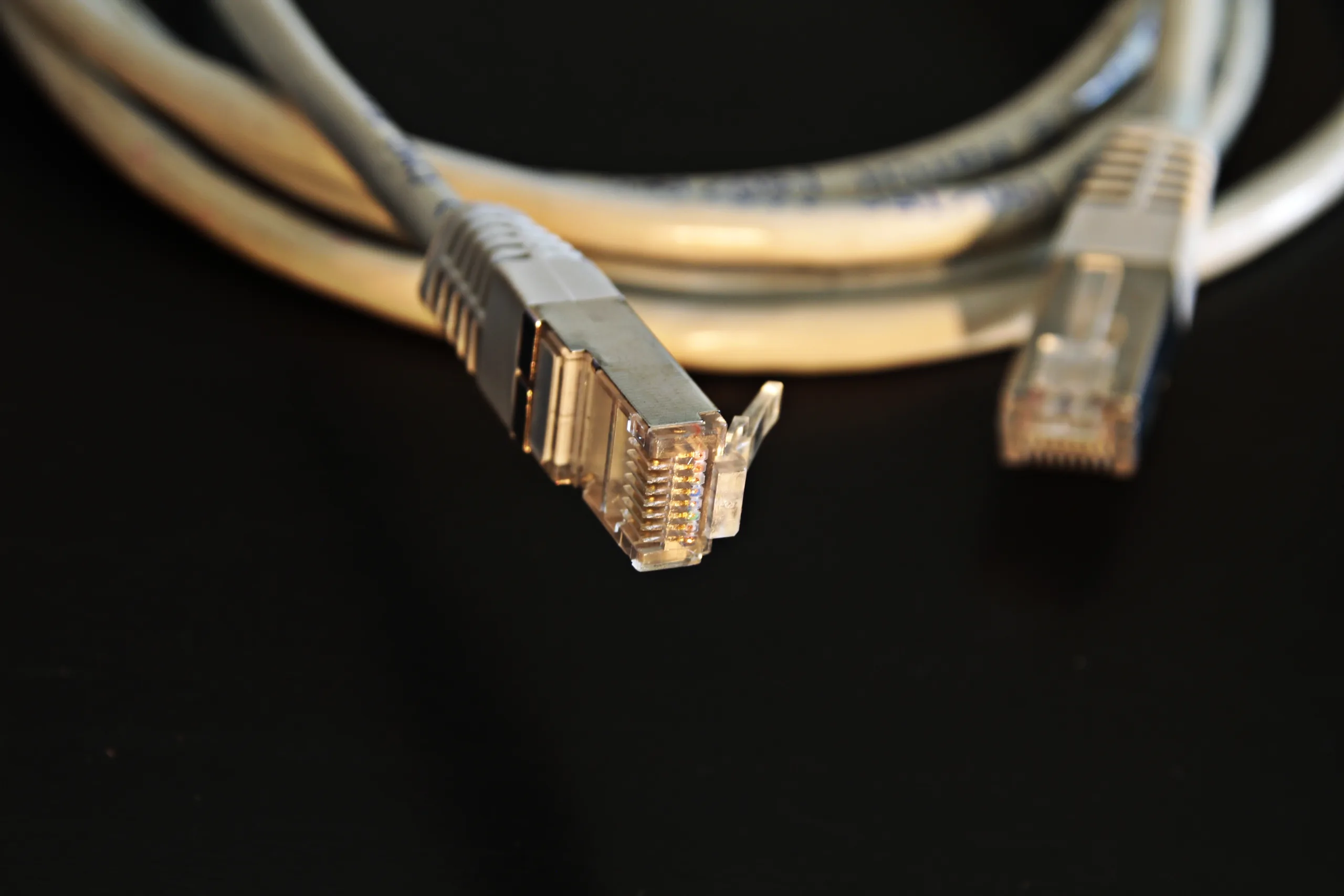Cat 5e, Cat 6, and Cat 7 are different categories of Ethernet network cables, each with varying capabilities and specifications. Here’s a brief comparison of the three:
- Cat 5e (Category 5e):
- Maximum Data Rate: Cat 5e supports data rates up to 1,000 Mbps (1 Gbps) at a maximum cable length of 100 meters.
- Use Case: It is suitable for most home and small office networks and is commonly used for Ethernet, Fast Ethernet, and Gigabit Ethernet connections.
- Shielding: Cat 5e cables may or may not have shielding (STP or UTP), but unshielded twisted pair (UTP) is more common.
- Cat 6 (Category 6):
- Maximum Data Rate: Cat 6 supports data rates up to 10,000 Mbps (10 Gbps) at a maximum cable length of 55 meters.
- Use Case: It is suitable for larger networks, including many business and enterprise environments, where high-speed data transmission is required.
- Shielding: Cat 6 cables typically have improved shielding compared to Cat 5e, providing better protection against electromagnetic interference (EMI).
- Cat 7 (Category 7):
- Maximum Data Rate: Cat 7 supports data rates up to 10,000 Mbps (10 Gbps) at a maximum cable length of 100 meters.
- Use Case: Cat 7 cables are designed for more demanding applications, including data centers and high-performance networks where maximum speed and performance are essential.
- Shielding: Cat 7 cables have extensive shielding (often referred to as S/FTP or F/FTP) to provide superior protection against EMI and crosstalk.
For the Ethernet connectors are used to physically connect network cables to networking devices, such as computers, routers, switches, and access points. These connectors ensure that data can be transmitted between devices efficiently and reliably. Several types of Ethernet connectors exist, each with its own characteristics and use cases. Here are some of the most common Ethernet connectors:
- RJ-45 Connector: This is the most widely used Ethernet connector and is commonly found in home and office networks. It has eight pins and is used with twisted-pair cables (such as Cat 5e, Cat 6, or Cat 7). RJ-45 connectors are typically used with Ethernet cables to connect computers, routers, switches, and other networking equipment.
- RJ-11 Connector: RJ-11 connectors are similar in appearance to RJ-45 connectors but have fewer pins (typically four or six). They are commonly used for telephone connections and are not suitable for Ethernet networking at higher speeds.
- RJ-12 Connector: RJ-12 connectors look identical to RJ-11 connectors but have six pins. They are used for some older Ethernet standards but are less common today.
- Modular Connectors (e.g., 8P8C): The term “8P8C” (8-position, 8-contact) is often used interchangeably with RJ-45 connectors. These connectors are modular and can be crimped onto the ends of Ethernet cables. They are used for connecting Ethernet devices to a network.
- SFP (Small Form-Factor Pluggable) Connector: SFP connectors are used in networking equipment such as switches and routers to provide modular interfaces for different types of network connections, including Ethernet. SFP connectors are commonly used in fiber optic networks.
- LC Connector: LC connectors are used with fiber optic cables for high-speed data transmission. They are small, reliable connectors commonly used in data center and enterprise environments.
- SC Connector: SC connectors are another type of connector used with fiber optic cables. They are often used in older installations but are less common than LC connectors in newer deployments.
- ST Connector: ST connectors are used with older multimode fiber optic cables. They are less common in modern networks but may still be encountered in legacy installations.
- MTP/MPO Connector: MTP (Mechanical Transfer Pull-off) and MPO (Multi-fiber Push-On) connectors are used with high-density fiber optic cables. They are often used in data centers and for high-speed, high-capacity connections.
- USB to Ethernet Adapter: Some devices, such as laptops, lack built-in Ethernet ports. In such cases, a USB to Ethernet adapter can be used to connect to a wired network via a USB port.
In summary, the main differences between these cable categories are their maximum data rates, cable lengths, and shielding. Cat 5e is suitable for most standard network needs, while Cat 6 offers higher speeds and some improvement in shielding. Cat 7 provides even higher speeds and robust shielding, making it ideal for demanding networking environments. The choice of cable should be based on your specific requirements and budget.
When selecting Ethernet connectors and cables, it’s important to ensure compatibility with the specific Ethernet standard and speed you intend to use (e.g., Cat 5e, Cat 6, Cat 7) and whether you are working with copper or fiber optic cables. Properly terminated and quality connectors are essential for reliable network performance.

